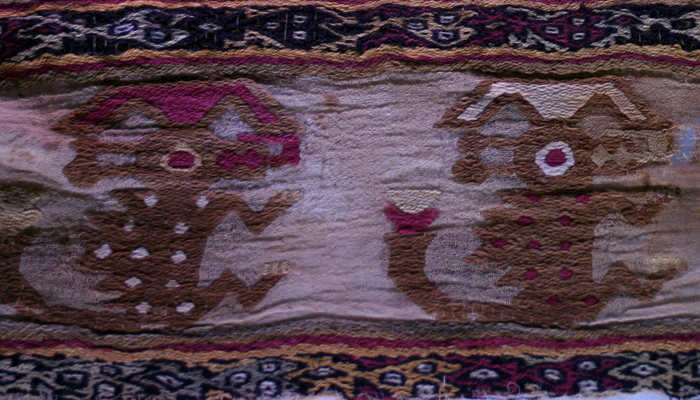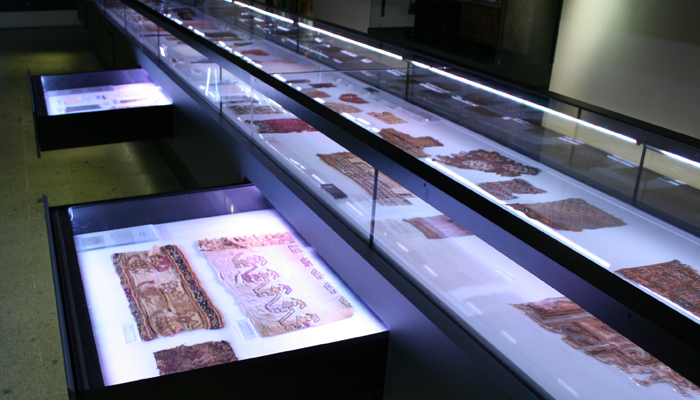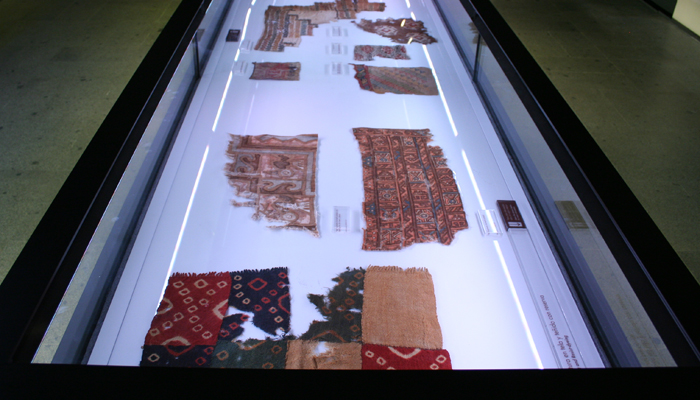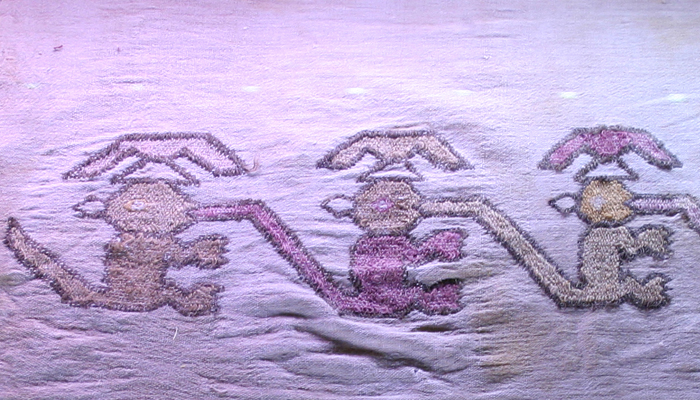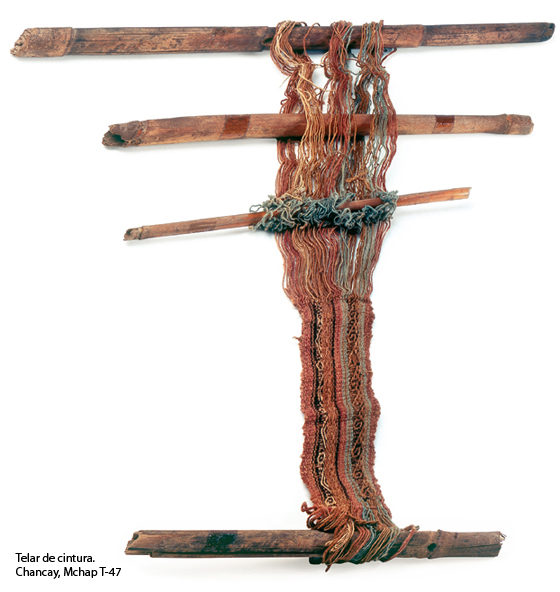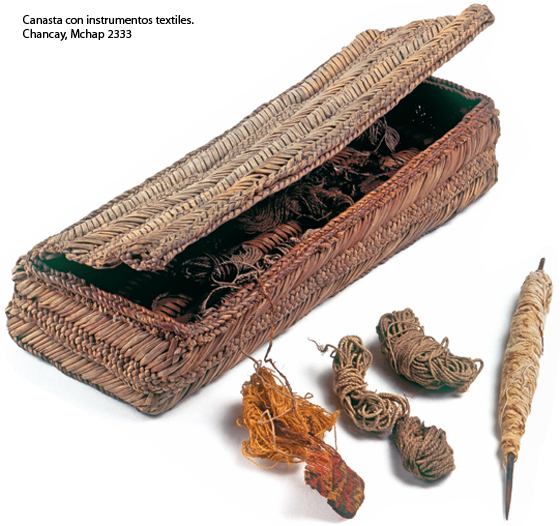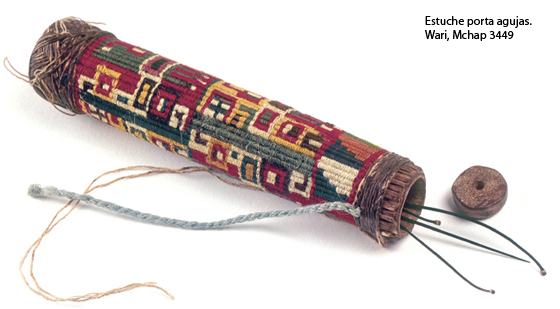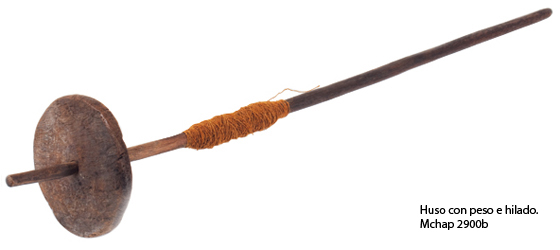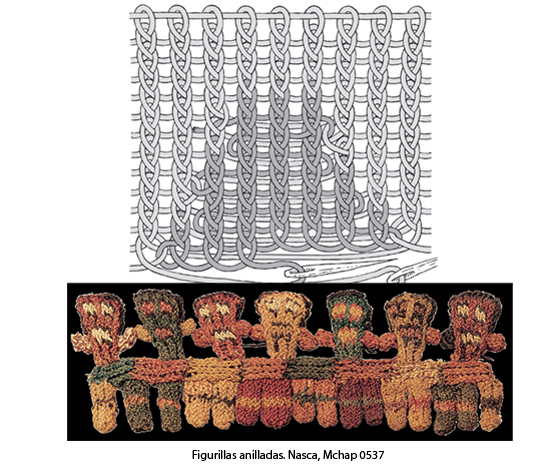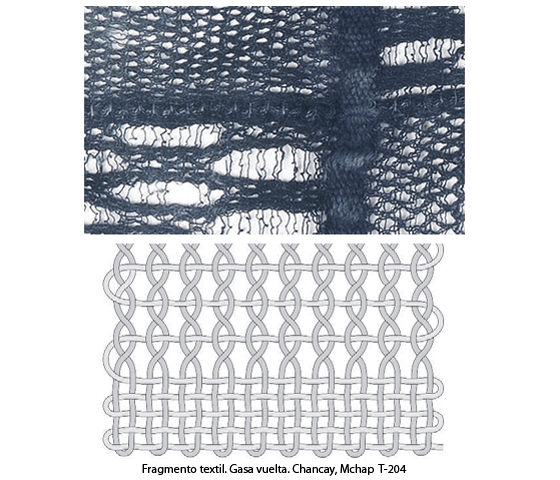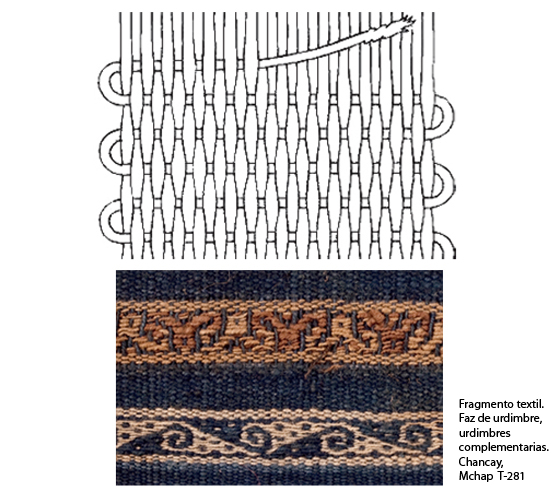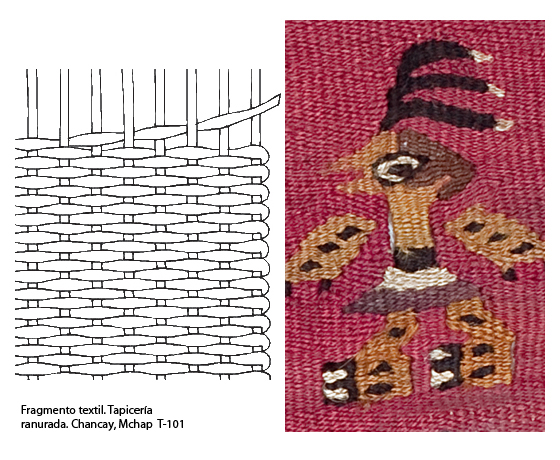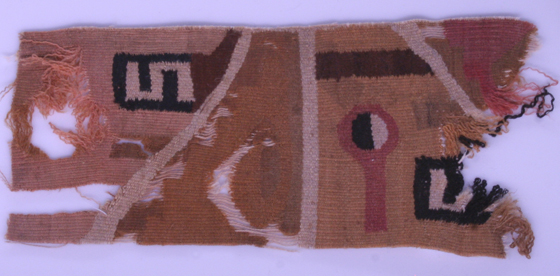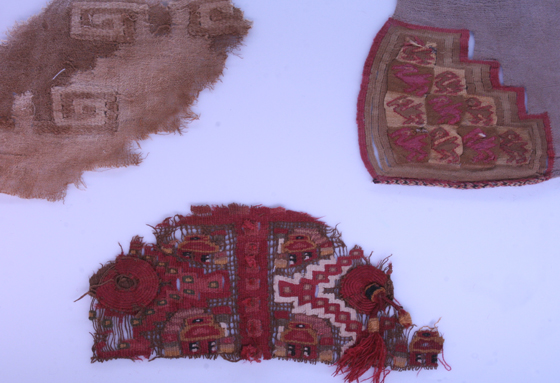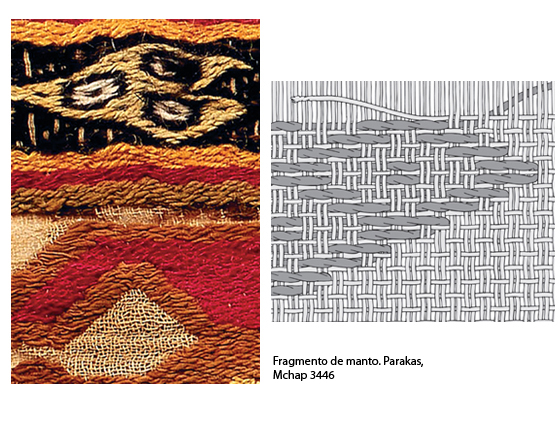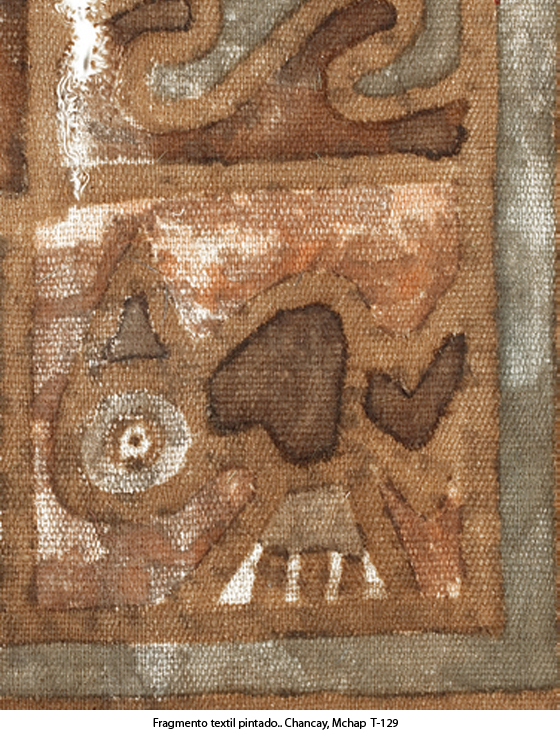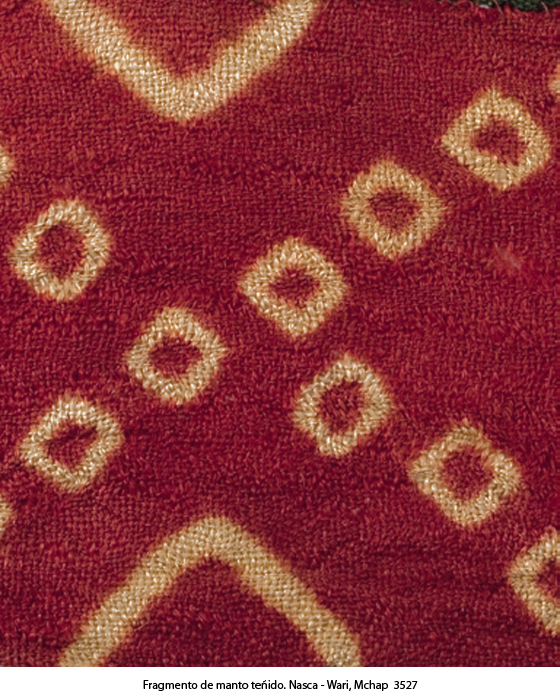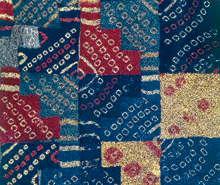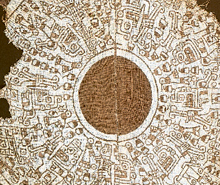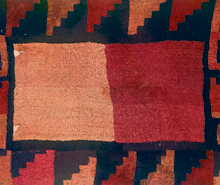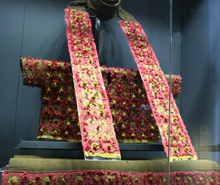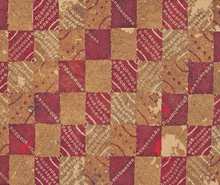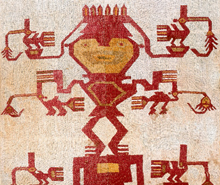Andean Textile Technology
Andean textiles are recognized around the world for their beauty, which is linked to the highly refined techniques used to produce them. They are the cumulative achievement of several thousand years in which textiles played an active role in perpetuating the cultural heritage of the pre-Columbian Andes.
Textile development began with the manufacture of long lengths of yarn or thread obtained by spinning different kinds of fibers. The thread was then looped, interlaced or braided to make the first textile structures. The need to stretch these flexible threads tightly to obtain broader surfaces led to the invention of the weaving loom and its implements. In the Andes, this invention opened up a world of possibilities for interlacing and combining threads, leading to the development of all basic of weaving structures known to date, as well as some that are unique to this region, such as reticular weave and discontinuous warp and weft weaving.
The complexity achieved contrasts with the simple and efficient set of implements used, pointing to the expert skill of the spinners, dyers, weavers, embroiderers and featherwork artists involved. These individuals mastered a broad repertory of representation and finishing techniques, giving birth to an array of images whose transcendence can still be appreciated today in the textiles produced by the Andean people.




































